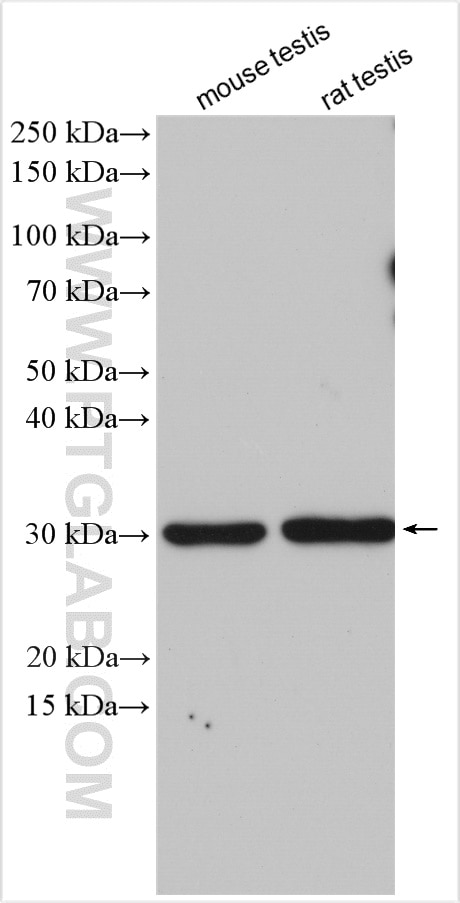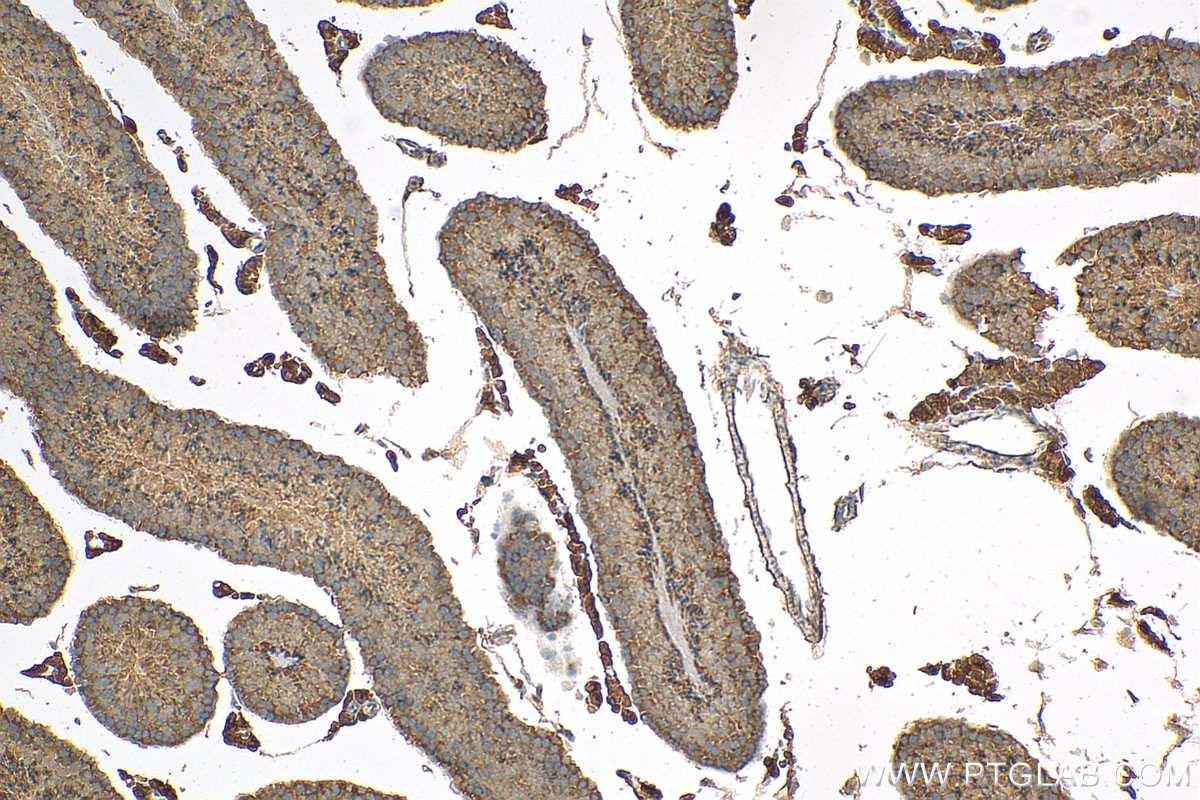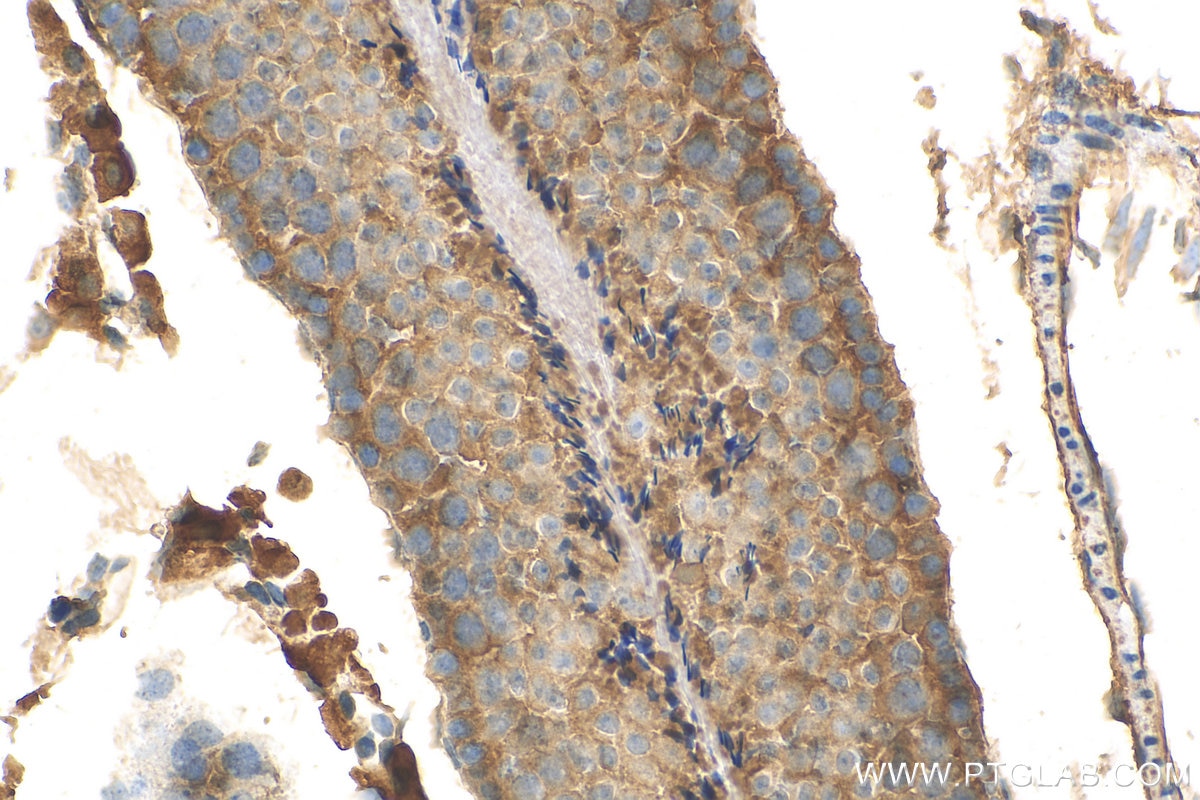Tested Applications
| Positive WB detected in | mouse testis tissue, rat testis tissue |
| Positive IHC detected in | mouse testis tissue Note: suggested antigen retrieval with TE buffer pH 9.0; (*) Alternatively, antigen retrieval may be performed with citrate buffer pH 6.0 |
Recommended dilution
| Application | Dilution |
|---|---|
| Western Blot (WB) | WB : 1:500-1:2000 |
| Immunohistochemistry (IHC) | IHC : 1:50-1:500 |
| It is recommended that this reagent should be titrated in each testing system to obtain optimal results. | |
| Sample-dependent, Check data in validation data gallery. | |
Published Applications
| WB | See 8 publications below |
| IHC | See 2 publications below |
| IF | See 2 publications below |
| IP | See 1 publications below |
| CoIP | See 2 publications below |
Product Information
11784-1-AP targets LY96/MD2 in WB, IHC, IF, IP, CoIP, ELISA applications and shows reactivity with human, mouse, rat samples.
| Tested Reactivity | human, mouse, rat |
| Cited Reactivity | human, mouse, rat |
| Host / Isotype | Rabbit / IgG |
| Class | Polyclonal |
| Type | Antibody |
| Immunogen | LY96/MD2 fusion protein Ag2447 Predict reactive species |
| Full Name | lymphocyte antigen 96 |
| Calculated Molecular Weight | 160 aa, 18 kDa |
| Observed Molecular Weight | 20-26 kDa |
| GenBank Accession Number | BC020690 |
| Gene Symbol | MD2 |
| Gene ID (NCBI) | 23643 |
| RRID | AB_2138089 |
| Conjugate | Unconjugated |
| Form | Liquid |
| Purification Method | Antigen affinity purification |
| UNIPROT ID | Q9Y6Y9 |
| Storage Buffer | PBS with 0.02% sodium azide and 50% glycerol , pH 7.3 |
| Storage Conditions | Store at -20°C. Stable for one year after shipment. Aliquoting is unnecessary for -20oC storage. 20ul sizes contain 0.1% BSA. |
Background Information
LY96, also named as ESOP1 or MD 2, is a small secreted glycoprotein that can bind to both the hydrophobic portion of LPS and to the extracellular domain of TLR4. The interaction between MD-2 and LPS bridges the two TLR4 molecules and induces the dimerization of LPS-MD-2-TLR4, which forms the structural basis for biological functions of TLR4/MD-2 complex. Due to its essential role in mediating the interaction between LPS and TLR4, MD-2 has been extensively explored as a therapeutic target for treatment of inflammatory disorders.
Protocols
| Product Specific Protocols | |
|---|---|
| WB protocol for LY96/MD2 antibody 11784-1-AP | Download protocol |
| IHC protocol for LY96/MD2 antibody 11784-1-AP | Download protocol |
| Standard Protocols | |
|---|---|
| Click here to view our Standard Protocols |
Publications
| Species | Application | Title |
|---|---|---|
Front Oncol MD2 Is a Potential Biomarker Associated with Immune Cell Infiltration in Gliomas. | ||
J Pharmacol Exp Ther The protective effect of Amitriptyline on experimental colitis through inhibiting TLR4/MD2 signaling pathway | ||
J Cardiovasc Transl Res Macrophage CD36 and TLR4 Cooperation Promotes Foam Cell Formation and VSMC Migration and Proliferation Under Circadian Oscillations. | ||
Molecules Sal B Alleviates Myocardial Ischemic Injury by Inhibiting TLR4 and the Priming Phase of NLRP3 Inflammasome. | ||
Oncol Rep Curcumin inhibits cell proliferation and migration in NSCLC through a synergistic effect on the TLR4/MyD88 and EGFR pathways. | ||
J Agric Food Chem Biotransformation of 18β-Glycyrrhetinic Acid by Human Intestinal Fungus Aspergillus niger RG13B1 and the Potential Anti-Inflammatory Mechanism of Its Metabolites |







